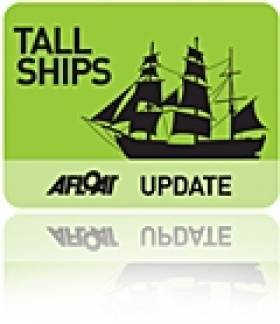Displaying items by tag: 'Class A'
More Tall Ships Head for Waterford
Waterford City will host day and night-time festivities, culminating with the 'Parade of Sail' on 3 July. On that day the fleet will set-sail down the Suir Estuary and head around Ireland's western seaboard on the first race leg bound for Greenock, Scotland.
The following 'Class A' (the largest tall ships) are so far confirmed: Christian Radich (Norway), Eendracht (Netherlands), Europa (Netherlands), Kaliakra (Bulgaria), Lord Nelson (UK), Pogoria (Poland), Royalist (UK) and the Wylde Swan from The Netherlands.
In 'Class B' vessels include the Jolie Brise, Maybe, Moosk, Provident, Swan, Spirit of Fairbridge, all from the UK. The category also includes Gedania (Poland), John Laing (UK), Ocean Spirit of Moray (UK) and Spaniel (Latvia) and two vessels from Belgium, the Rupel and Tomidi.
In addition the Dutch Urania is the first 'Class D' entrant to register for the Waterford event.
The Tall Ships Races is presented by Szczecin and organised by Sail Training International. Further information on participating as a sail trainee in The Tall Ships Races 2011 contact 051 849640 or www.waterfordtallshipsrace.ie and www.facebook.com/enjoywaterford
Looking for further reading on Tall Ships in Ireland? Click the links below:
Click this link to read all our Tall Ships Stories on one handy page
Previewing Ireland's Tall Ships 2011 Season
Can Ireland Get a New Tall Ship?






























































